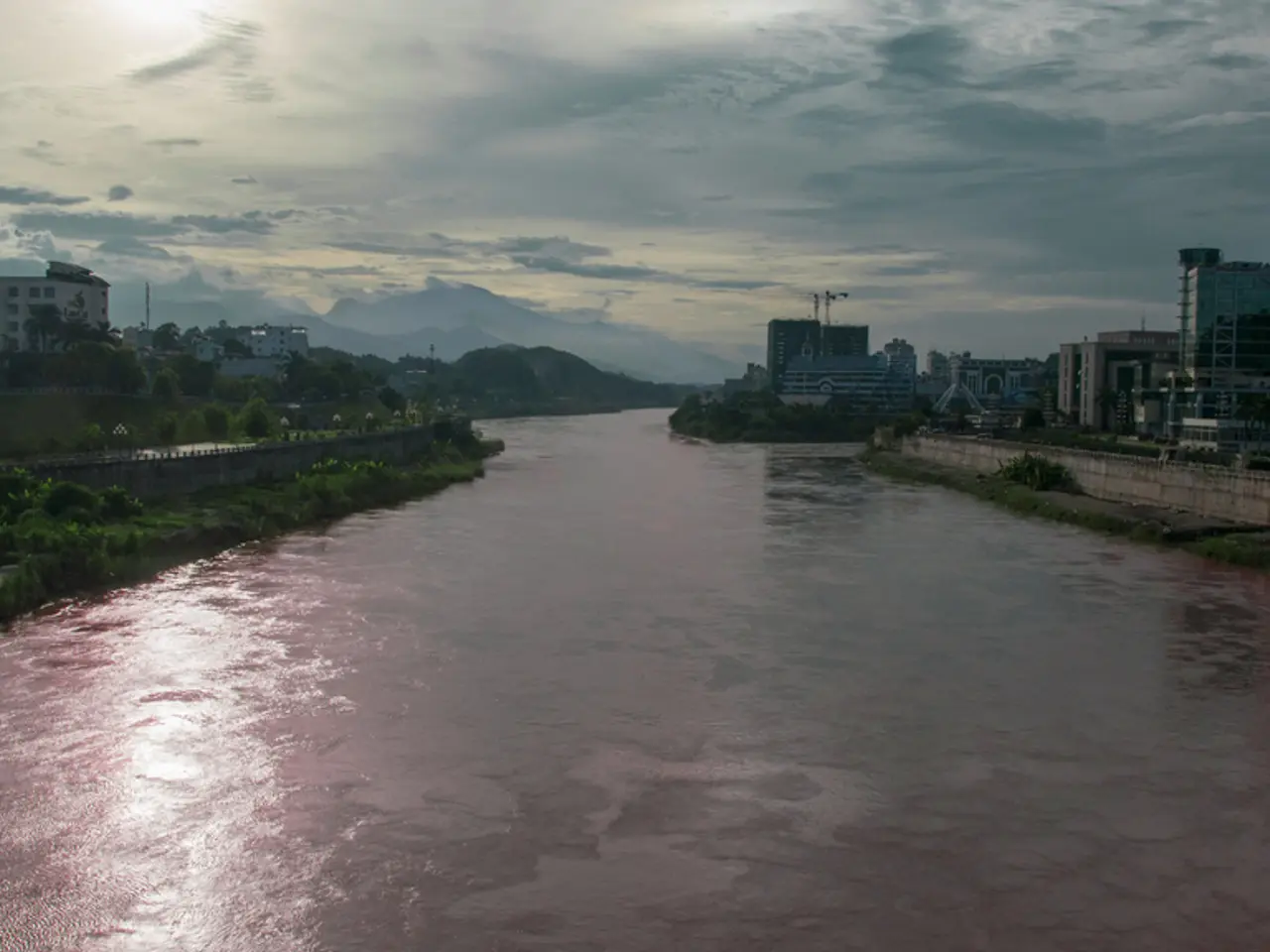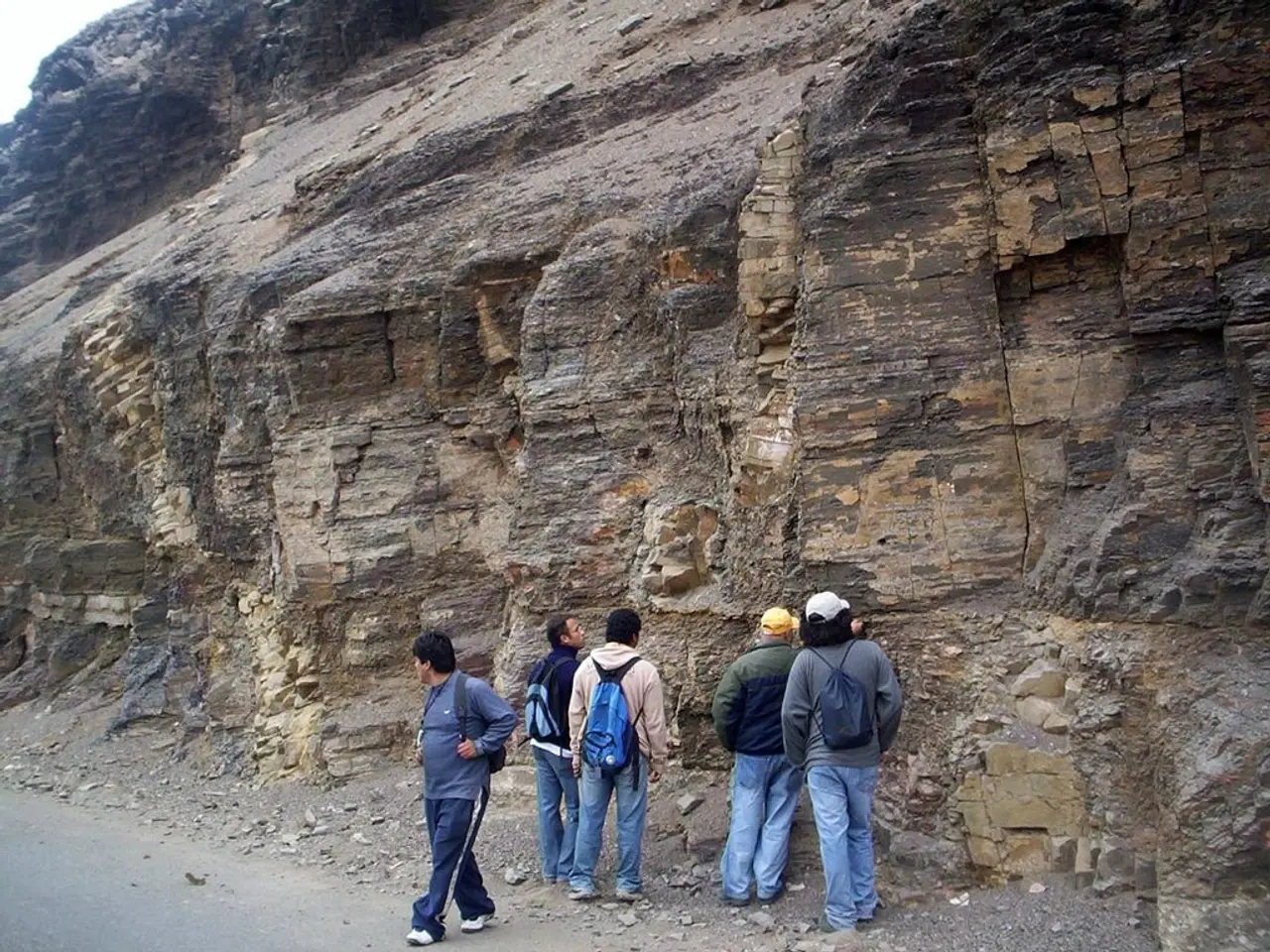Sinking and shrinking of Pakistan's Indus River, known as its demise
The Indus Delta, a vibrant region once known for its thriving farming and fishing communities, is now battling a crisis that has lasted for decades. Seawater intrusion, primarily caused by decades of water mismanagement, climate change, and hydropower projects upstream, has drastically reduced the freshwater flow into the delta by about 80%.
The British colonial rulers were the first to alter the course of the Indus River with canals and dams, followed by hydropower projects. This historical water mismanagement, coupled with the disruption of the Indus Waters Treaty (IWT) between Pakistan and India, has worsened the situation. The treaty, especially after India suspended it in 2025, halted critical data sharing on river flows and flood warnings, complicating water management efforts for Pakistan.
The effects of seawater intrusion are profound. The increased salinity from seawater has devastated agricultural lands and fisheries, which are the economic backbone for local populations. As salinity rises, soil fertility declines, and fish populations drop, destroying livelihoods. Over 1.2 million people have been displaced from the delta region in the last two decades, as villages become surrounded or submerged by seawater.
The degradation of the delta represents not just an environmental crisis but also a cultural one, as communities lose traditional lifestyles tied to farming and fisheries. Women, in particular, face challenges adapting to new urban settings after displacement. The intrusion of saltwater threatens to submerge coastal villages and destroy the delta’s fragile ecosystem, including mangrove forests that serve as critical buffers against sea intrusion and provide habitat for wildlife.
In addition to local mismanagement, broader factors such as climate change–induced sea-level rise and upstream water diversions have accelerated seawater intrusion, creating a highly unsustainable situation for the delta's communities and ecosystems. Recovery efforts by the Sindh government, such as mangrove restoration and the Living Indus Initiative, are underway but face significant challenges from competing water demands and continued development pressures.
Residents like Haji Karam Jat, a resident of Keti Bandar, and Khatti from Abdullah Mirbahar village, are considering leaving their homes due to the decline of their communities. The town of Kharo Chan, once comprising around 40 villages, has seen most of them disappear under rising seawater. The town's population has fallen from 26,000 in 1981 to 11,000 in 2023.
The 'Living Indus Initiative', launched by the government and the United Nations in 2021, aims to combat the degradation of the Indus River Basin. One intervention of the initiative focuses on restoring the delta by addressing soil salinity and protecting local agriculture and ecosystems. However, land grabbing and residential development projects drive clearing in some areas of the coastline, despite mangrove restoration efforts.
The Indus River meets the Arabian Sea in a delta, where seawater intrusion has led to the collapse of farming and fishing communities. India poses a threat to the Indus River and its delta by revoking a 1960 water treaty and threatening to build dams upstream, which could squeeze the flow of water to Pakistan. The combined causes—water mismanagement, hydropower projects reducing freshwater flow, climate change, and political issues disrupting water treaty cooperation—have led to seawater intrusion causing the collapse of farming/fishing livelihoods and displacement of over a million people in the Indus Delta.
- The Indus Delta, once known for its thriving farming and fishing communities in India, now grapples with a prolonged crisis due to seawater intrusion, heavily influenced by climate change, hydropower projects, and water mismanagement.
- Since the British colonial era, significant alterations have been made to the Indus River, with the construction of canals, dams, and hydropower projects, contributing to the current water management challenges and seawater intrusion.
- Stakeholders in the environmental science, finance, and industry sectors should collaborate on sustainable solutions to address seawater intrusion, primarily by reducing freshwater diversion, improving water management, and supporting renewable energy sources to mitigate climate change effects.
- Salinity intrusion in the Indus Delta not only impacts the local environment but also the culture and livelihoods of millions of people, primarily women, who rely on traditional farming and fishing practices, intensifying the need for comprehensive recovery and restoration efforts.




